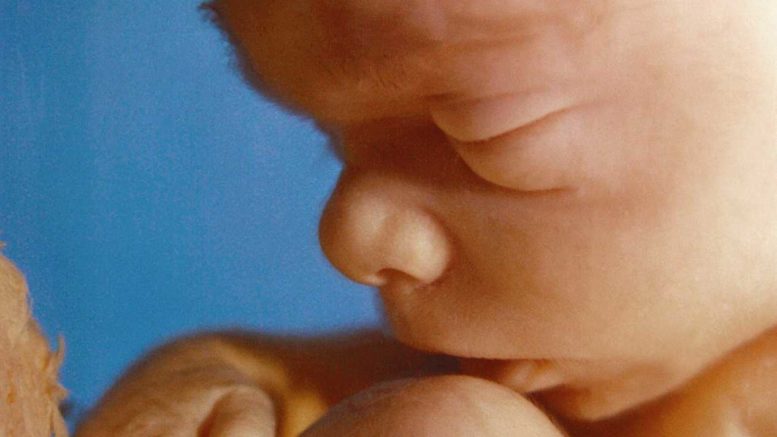LIVE UPDATES HERE ONGOING
- The Supreme Court in a 6-3 decision overturned Roe v. Wade, the landmark ruling that established the constitutional right to abortion.
- Roe since 1973 had permitted abortions during the first two trimesters of pregnancy in the United States.
- Almost half the states are expected to outlaw or severely restrict abortion as a result of the Supreme Court’s decision on a Mississippi case known as Dobbs v. Jackson Women’s Health Organization.
- Justice Samuel Alito wrote the majority opinion. The court’s other five conservatives, including Chief Justice John Roberts, joined in the judgment, which was opposed by the three liberal justices.
BREAKING: US Supreme Court overturns Roe v. Wade in historic ruling
LifeSiteNews is on the cutting edge of life and family news reporting. Support our Summer Campaign by giving a gift of support today: give.lifesitenews.com
WASHINGTON (LifeSiteNews) – The United States Supreme Court finally issued its ruling in Dobbs v. Jackson Women’s Health Organization Monday, upholding Mississippi’s 15-week abortion ban on a 6-3 vote, explicitly overturning Roe v. Wade on a 5-4 vote, and delivering the pro-life cause its most transformative victory since Roe unleashed nationwide abortion-on-demand in 1973.
Justice Samuel Alito delivered the opinion of the Court, which was joined by Justices Clarence Thomas, Neil Gorsuch, Brett Kavanaugh, and Amy Coney Barrett. The ruling declares Roe “egregiously wrong from the start.”
“Its reasoning was exceptionally weak, and the decision has had damaging consequences,” Alito wrote. “The Constitution makes no reference to abortion, and no such right is implicitly protected by any constitutional provision.”
“It is time to heed the Constitution and return the issue of abortion to the people’s elected representatives,” Alito continued.
Chief Justice John Roberts wrote a concurring opinion stating that he would not have overturned Roe but would have left the Mississippi ban in place. The Court’s three Democratic appointees dissented.
The long-awaited ruling was teased in early May when Politico published a leaked draft of Alito’s opinion, which sent shockwaves across the political spectrum, with pro-lifers tentatively rejoicing, pro-abortion politicians and activists lashing out in anger, many speculating that the leak may have been intended to pressure judges to flip their votes (or to incite hatred and threats against them), and all parties wondering if it was the final decision or subject to change.
That the final decision to overturn Roe held firm despite months of left-wing pressure reflects a majority of the justices’ commitment to the principle articulated in May by conservative Justice Clarence Thomas, that “we can’t be an institution that can be bullied into giving you just the outcomes you want.”
The ruling holds massive ramifications, both immediate and long-term. More than twenty states currently have laws on the books that would effectively ban abortion within their borders upon Roe’s fall, from pre-Roe abortion bans that went unenforced to “trigger laws” designed not to take effect until a ruling like today’s. In those states, abortion is now illegal.
Another fifteen states plus the District of Columbia have laws on the books legally protecting abortion, three of which explicitly codify the practice as a “right.” For now, abortion will remain legal in those jurisdictions, as well as the remaining states that have not spelled out abortion’s status one way or another, but without Roe state residents now have the power to vote on the issue for themselves, or lobby their elected representatives to change the law in either direction. Pro-lifers in Congress can now pursue a nationwide abortion ban, as well.
New York Times:
The decision, eliminating the constitutional right to an abortion after almost 50 years, will lead to all but total bans on the procedure in about half of the states.
WASHINGTON — The Supreme Court on Friday overruled Roe v. Wade, eliminating the constitutional right to abortion after almost 50 years in a decision that will transform American life, reshape the nation’s politics and lead to all but total bans on the procedure in about half of the states.
The ruling will test the legitimacy of the court and vindicate a decades-long Republican project of installing conservative justices prepared to reject the precedent, which had been repeatedly reaffirmed by earlier courts. It will also be one of the signal legacies of President Donald J. Trump, who vowed to name justices who would overrule Roe. All three of his appointees were in the majority in the 6-to-3 ruling.
The decision, which echoed a leaked draft opinion published by Politico in early May, will result in a starkly divided country in which abortion is severely restricted or forbidden in many red states but remains freely available in most blue ones.
Chief Justice John G. Roberts Jr. voted with the majority but said he would have taken “a more measured course,” stopping short of overruling Roe outright. The court’s three liberal members dissented.
The case, Dobbs v. Jackson Women’s Health Organization, No. 19-1392, concerned a law enacted in 2018 by the Republican-dominated Mississippi Legislature that banned abortions if “the probable gestational age of the unborn human” was determined to be more than 15 weeks. The statute, a calculated challenge to Roe, included narrow exceptions for medical emergencies or “a severe fetal abnormality.”


